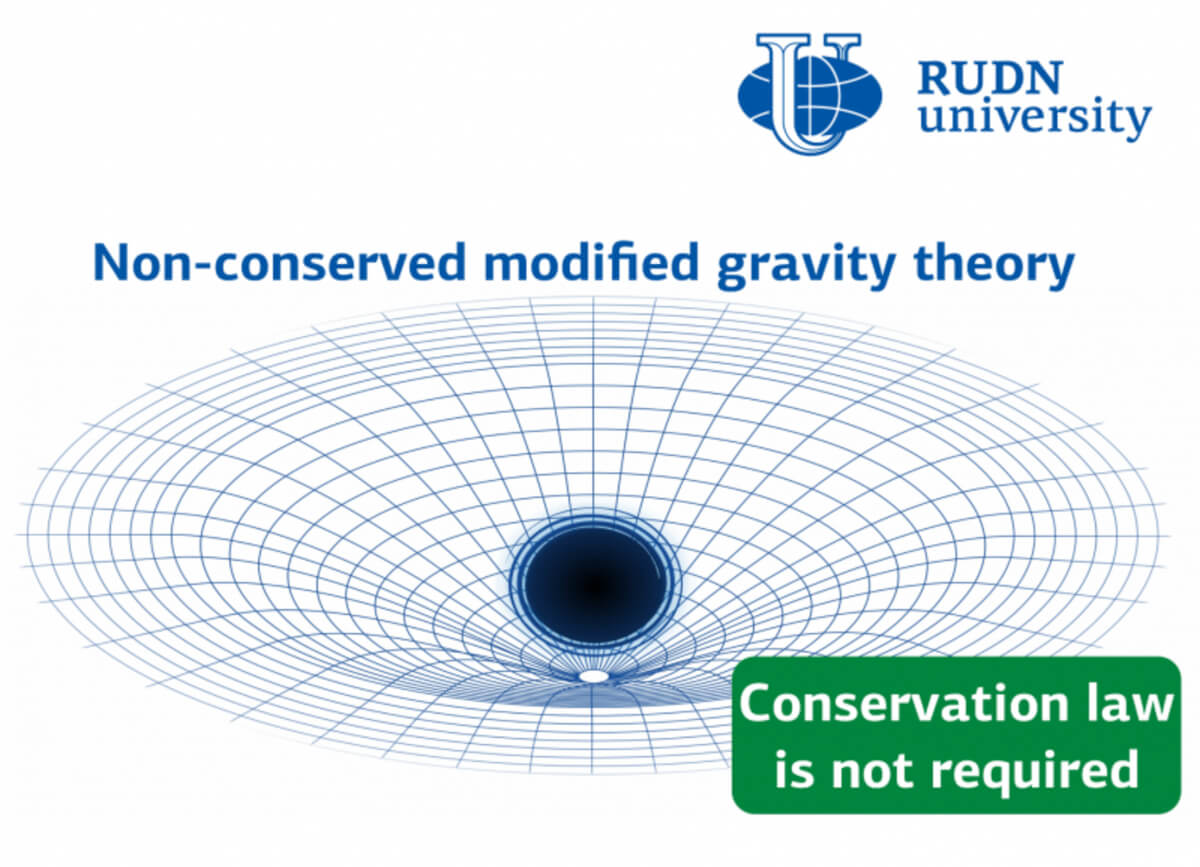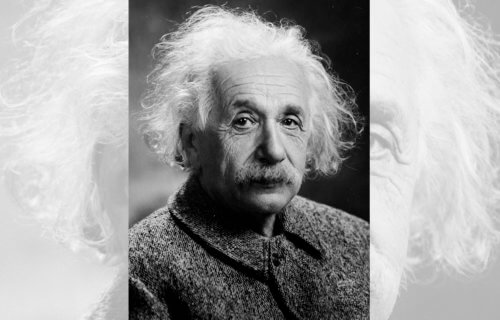MOSCOW — Did Albert Einstein’s theory of relativity just get upended forever? An astrophysicist at RUDN University in Russia has developed a revolutionary new theory of gravity. This innovative premise diverges from the classic Einsteinian model by not relying on a conservation law, potentially resolving some longstanding inconsistencies in the field. It offers a fresh lens through which we can view the workings of the universe, from the smallest particles to the largest structures.
Einstein’s general theory of relativity, a cornerstone of modern physics proposed by the iconic scientist in 1915 and the current foundation of our understanding of gravity, hinges on the concept of curved space-time. General relativity tells us how massive objects like stars and planets warp the fabric of spacetime, much like how a heavy object can deform a trampoline. This warping creates what we feel as gravity.
A crucial aspect of this theory is the energy–momentum tensor, a mathematical construct, to describe how energy and momentum are distributed in space-time and interact with the gravitational field. Imagine a bustling city as a representation of the universe. Buildings, cars, people — they all represent different forms of energy and momentum (movement). The energy-momentum tensor is like a detailed ledger that accounts for all this energy and movement in every part of the city. It tells us how energy is distributed, how it flows, and how different forms of energy (like light, heat, or kinetic energy) interact with each other and with the fabric of spacetime — the ground and air of our city analogy. In simpler terms, it’s a mathematical way to keep track of all energy and motion in the universe.
Traditionally, in general relativity, this tensor is assumed to be conserved, similar to the law of conservation of energy in mechanics. This assumption has its limitations, particularly at high energy levels where non-renormalizability – a kind of mathematical incompatibility – occurs.

“The problem of non-renormalizability of Einstein’s gravity is well known. It has led to dozens of attempts to treat it as a low-energy theory. For example, in string theory, Einstein’s classical equation is just the first term in an infinite series of gravitational corrections,” says Hamidreza Fazlollahi, a graduate student at the Educational and Scientific Institute of Gravity and Cosmology of RUDN University who developed the new theory, in a media release. “So it is possible that at high energy and/or within the event horizon of black holes, spacetime curvature and gravity deviate from Einstein’s general theory of relativity. This can be explained in different ways. However, in any case, the law of conservation of energy-momentum can be violated at high energy levels.”
To address this, Fazlollahi developed a new gravitational model, that he calls the “Non-conserved modified gravity theory.” This introduces a radical idea: What if, in certain conditions, the energy and momentum in some parts of the universe could change over time? This concept is akin to suggesting that buildings or cars in our city could spontaneously gain or lose energy, challenging a fundamental law of physics. The theory posits that in regions of curved spacetime, the rules we thought were set in stone might not always apply.
It starts from the Gibbs-Duhem relation, an equation used in thermodynamics to describe changes in a system. The resulting equation bears a resemblance to Einstein’s classical equation but includes unique factors and constants. Notably, the new field equations incorporate two additional terms, accounting for temperature-entropy and charge-interaction dynamics.
This novel model shows promising consistency across different environments and holds potential for various applications in astrophysical and astronomical research. Fazlollahi tested the theory by analyzing two key phases of the universe’s development: the inflationary period and the phase of accelerating expansion. The findings align well with experimental observations.

“The model did not give any discrepancies regarding Einstein’s gravity for vacuum,” explains Fazlollahi.
This development represents a significant step in understanding gravity, especially in extreme conditions, and could pave the way for new insights into the universe’s mysteries. The model’s alignment with experimental data suggests it could be a valuable tool for future research in astrophysics and cosmology.
Implications for Cosmology: A Two-Fold Exploration
The implications of non-conserved modified gravity are vast and particularly significant in two critical periods of the universe’s history: the inflationary period of the early universe and the late-time universe dominated by dark energy.
-
Inflationary Period: The early universe went through a phase of rapid expansion, known as inflation. Fazlollahi’s theory suggests that during this period, the non-conservation of energy and momentum could have played a role, offering new insights into the universe’s initial moments.
-
Late-Time Universe: As we observe the accelerated expansion of the universe today, largely attributed to dark energy, this new theory could provide a fresh perspective on how this mysterious force operates.
Challenges and Opportunities in Theoretical Physics
Fazlollahi’s work is not just a new set of equations or predictions. It’s a challenge to the status quo, inviting physicists to rethink some of the most fundamental aspects of their field. This theory opens up exciting opportunities for new research and experiments. It’s a call to the scientific community to explore these uncharted territories and verify or refute the bold claims of the theory.
The journey from a theoretical proposal to an accepted part of scientific knowledge is long and rigorous. Fazlollahi’s theory needs to withstand the scrutiny of peer review, be tested against observations, and fit within the broader framework of physics. Upcoming experiments, especially in the field of astrophysics and cosmology, will play a crucial role in examining the validity of this new perspective on gravity.
His research behind the theory is published in The European Physical Journal C.
You might also be interested in:
- Physicists Find Groundbreaking Evidence Time Is Reversible Within Glass
- Einstein proven right again! Study of extreme stars confirms theory of general relativity
- Radical theory could unite Albert Einstein’s concept of gravity with quantum mechanics
- Earthshaking Discovery: Tectonic Plates Not The Driving Force That Formed Continents

yorie, look ignaty taller ognghd.
Whilest readily and wholesomely electrically observable as our universe is,
On a primed entirety it exists, whether at an instantly observable level or not, of a electro-chemical nature. Reaction on reaction pon sphere of influence pon gradual engradientirities on down into ad infonum. Macro to micro, low abovened undering withed outenedlessed ides….
^_^
HUH?
Just stick with Newton gravity. He had it correct. No question about that.
You do and you clean it up.
Einstein had no abilities at all. Study, Justify & understand outer space Network systems. So please upgrade your education Syllabus first.
Your space science education is not valuable. Unless you cannot explain the God Orders, Rules & Regulation’s for this limited Galaxy network systems. So you and NASA, JAXA, ESA, UNOOSA, CNSA, Einstein are the Estimated, Nonsense, Fraudulent Space Science Stories Station’s. From your books & Technologies. I can prove it.
ATIQ AHMAD
+92300 9411838
Lahore, Pakistan.
So in other words, at high energy levels, energy creates more energy, not by nuclear processes that convert mass back into it’s constituent parts aka energy, but by some unexplained mechanism that doesn’t align with one of our most reliable physical laws on thermodynamics.
Why do I sense that a string theorist is behind this??? 🤣
Cosmology:
General relativity tells us how massive objects like stars and planets warp the fabric of spacetime (cosmic vacuum). Einstein’s gravity is occurts in the cosmic vacuum. This warping of mass (and energy) creates new space and time what we feel on our planet Earth as gravity effect.
General relativity is a correct theory, but its interpretations and conclusions are incorrect.
More cosmological pseudo
Vera Rubin’s observation that 65% of mass is missing in galaxies, was in fact an invalidation of the belief that gravity is the fundamental force of celestial objects. But, instead of recognizing this failure to predict as a refutation, they instead, out of confirmation bias, invented the hypothetical and undetectable Dark Matter to keep a dying model on life support.
Since gravity is not the fundamental force of celestial objects, Einstein’s general theory of relativity is irrelevant. And frankly, it isn’t good science as it was built also on a hypothetical undetectable stuff: space time matrix. Therefore any theory that continues to utilize this space time matrix is just mathematical pseudo science.
There is a great deal of this pseudo science dominating cosmology today, which is frankly a sad state of affairs. And science reporters who dish this pap out to the public are agents of misinformation and confusion.
Nothing new on this theory in fact all it is is theory, when it comes right down to it Science as we know it does not have the slightest idea of what Gravity actually is!. This is just another person trying to get notoriety on some hair brained theory he came up with so he can say I’m (smarter then Einstein). Along with your comment which is worth about Zilch. Non of it is proofable at this point and time. What some people will do to make headlines LOL.
I am not a scientist or cosmologist by any means, but the whole idea of “dark matter” sounded ridiculous from the moment I first heard about it. The idea that there is some sort of exotic matter that can’t be detected by us in any way, even though people have spent decades trying to uncover it, should have been put to bed years ago. But I agree with you that it was kept alive so that scientists didn’t have to go back to the drawing board per se.
Can you clarify what you mean by space time matrix? Do you mean the idea that space and time are seen as one and the same according to Einstein? Again, I’m not a scientist so excuse me if this question is elementary. I’m just someone who has become extremely curious about the universe and would like to learn more. Thank you.
You’re artfully deluded. You must have a PhD in fantasy.
The sun is rising.
Article promotes honest rhetorical response..opposing.theory that’s historically accepted does challenge status quo..shame to stop these thoughts.. I believe there’s a way.mankind can explore space..and more
I think that the theory is great but I believes its better explained by our vibrational frequencies. We as humans are like a battery in a sense as our blood flows and vibrate at a certain frequency which creates a magnetic field its not the fabric of time and the presence of matter its the presence of a magnetic feild is what attracts us to the earth because its vibrating at the same frequency thus attracting us to it because of the earths magnetic field it is as powerful as it is due to the strength of the field on other planets or objects the lightsler that magnetic field the lighter the gravitational pull its common sense at this point
Another PhD thesis trying to keep “The Big Bang Theory” from imploding.
It is nonsense and any person who did not immediately accept TBBT sees it as such.
However, like AGW and Climate Change rejecting the theory results in oblivion because the money wants it that way.
Maybe you will understand it.
https://www.scirp.org/journal/paperinformation?paperid=130933
Gravity is the combined reaction of the gyroscopic forces of rotation of electrons to the external influence from the Expansion of the Universe.
Global Journal of Science Frontier Research, A, vol.24(1) p.43.